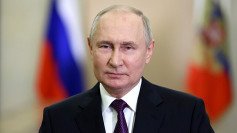The highest volcano on Indonesia's Java Island erupted violently on Saturday, killing at least 14 people. Rescue operations are still ongoing, but efforts have been hampered by thick mud and smoldering debris.
Mount Semeru in Indonesia's East Java province suddenly erupted and spewed thick columns of smoke and ash more than 40,000 feet into the sky. Nearby villages and towns were buried under thick mud as the eruption occurred during heavy rains.
Despite warnings from authorities, thousands of people still returned to their homes to check on their livestock and possessions on Sunday. East Java's search and rescue agency said that everything around the volcano had been covered in a cake of ash and mud, and houses nearby had been scorched.
Rescue operations and search efforts for survivors were temporarily halted on Sunday afternoon as hot ash continued to fall from the sky due to heavy rains. A mudslide had also destroyed several homes and infrastructures, including the main bridge connecting Lumajang to its neighbors.
Abdul Muhari, a spokesman for the National Disaster Mitigation Agency, said 56 individuals had been hospitalized, most suffering burns. He said rescuers were still looking for nine Curah Kobokan villagers.
Following Saturday's violent eruption, more than 1,300 people flocked to temporary emergency shelters, while many more rejected government warnings and elected to stay in their houses, claiming they needed to care for their animals and preserve their property.
President Joko Widodo said he had given his Cabinet ministers, as well as disaster and military officials, orders to coordinate the response. Residents of the hardest-hit villages will be relocated to safer areas in the next six months, with each family receiving $34.50 a month in compensation while they wait for new homes.
The eruption relieved the pressure that had been accumulating beneath a lava dome on the crater's edge. Experts cautioned, however, that the dome might still collapse, releasing the hot gas and debris trapped beneath it.
The eruption was initiated by a rainstorm and days of rain that eroded and partially destroyed the dome atop the 12,060-foot volcano.
Semeru, a cone-shaped stratovolcano, is also known as Mahameru, which means "Great Mountain" in Sanskrit. Over the previous 200 years, it has erupted many times. Despite this, more than 62,000 people live on Sumeru's lush slopes, which are home to 129 volcanoes in Indonesia, the world's biggest archipelago.
Because it sits along the Pacific "Ring of Fire," a horseshoe-shaped sequence of fault lines, Indonesia, an island of more than 270 million people, is prone to earthquakes and volcanic activity. Java, the country's most densely populated area, is home to 54% of the country's population.






